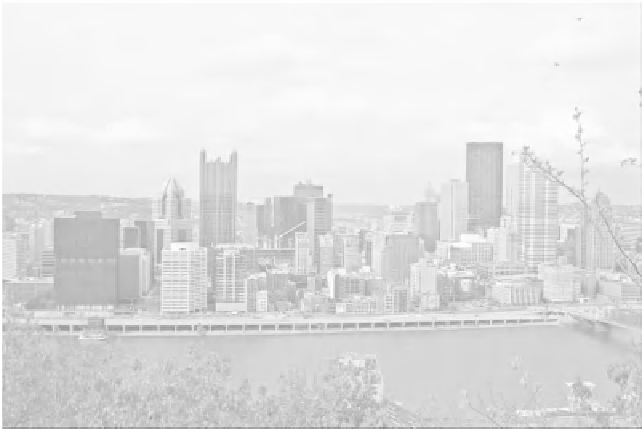Environmental Engineering Reference
In-Depth Information
was based on a transportation system that was far less intrusive and demanding.
The automobile creates a major impediment to the use of the village model for
new communities, unless an integration of functions is clearly established and
the auto is limited.
3.5 CONFLICT BETWEEN DESIRED LAND USE AND SUSTAINABILITY
When we refer to “desired land uses” we usually mean desired by the owners,
developers, or other parties that will profit or benefit from the development. In
older communities, especially the larger cities, a prior use may no longer be
appropriate to the current situation. Many of the older urban centers situated
along inland rivers, such as Pittsburgh, Pennsylvania (Figure 3-10), have river-
front property where commerce and industry is gradually being transformed and
replaced by a desire to use the land for mixed office and residential purposes
(Figure 3-11). In this example, a “vision plan” has been developed [1] that will
accomplish this transition, with two major environmental goals: to restore the
hydrologic cycle (by preventing rainfall from drowning the “combined” sewage
and stormwater system and producing overflows to the river), and by restoring
the tree canopy throughout the entire area, with an ultimate goal of 40% canopy
cover. Other cities have set similar redevelopment goals with a large “green”
component, but none quite so ambitious. Whatever the growth pressure, be it
Figure 3-10
Pittsburgh, Pennsylvania, at the confluence of the Allegheny and Monongahela
rivers, forming the Ohio River, has undergone dramatic land use changes, which continue
today, including use of vegetation for stormwater management.












Search WWH ::

Custom Search